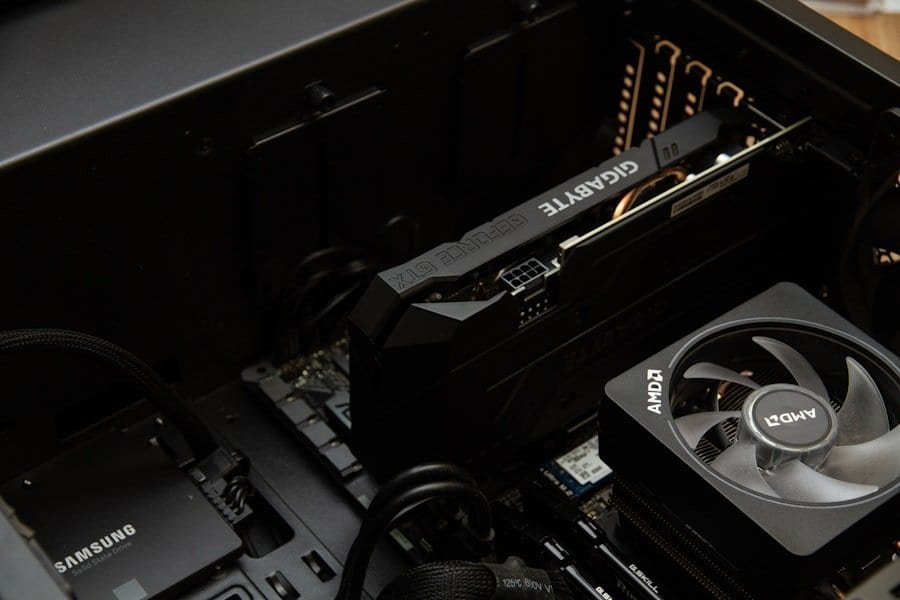In today’s technology-driven world, businesses heavily rely on various hardware components to carry out their daily operations. From computers and servers to printers and networking equipment, these devices are essential for productivity and efficiency. However, as with any technology, hardware can experience issues and failures that can disrupt workflow and result in costly downtime. This is where reliable hardware support comes into play. Hardware support refers to the services provided by a third-party provider to ensure the smooth operation of your tech investment. In this article, we will explore the importance of reliable hardware support for maximizing tech investment and discuss how to choose the right provider.
The Importance of Reliable Hardware Support for Maximizing Tech Investment
One of the primary reasons why reliable hardware support is crucial for maximizing tech investment is its ability to prevent downtime and increase productivity. When a piece of hardware fails or malfunctions, it can bring an entire operation to a halt. This downtime can result in lost revenue, missed deadlines, and frustrated employees. By having a reliable hardware support provider in place, businesses can minimize the impact of such issues by quickly resolving them and getting systems back up and running as soon as possible.
Furthermore, reliable hardware support can save money in the long run. While investing in quality hardware is essential, it is equally important to have a support system in place to address any issues that may arise. Without proper support, businesses may find themselves spending significant amounts of money on repairs or replacements when problems occur. On the other hand, with reliable hardware support, businesses can benefit from proactive maintenance, timely repairs, and expert advice that can help extend the lifespan of their hardware and avoid costly replacements.
How to Choose the Right Hardware Support Provider for Your Tech Investment
When it comes to choosing a hardware support provider for your tech investment, there are several factors to consider. First and foremost, it is essential to evaluate the provider’s reputation and track record. Look for reviews and testimonials from other businesses that have used their services to get an idea of their reliability and customer satisfaction. Additionally, consider the provider’s experience and expertise in handling the specific hardware components you have invested in. A provider with extensive knowledge and experience in your industry can offer tailored solutions and better understand your unique needs.
Another crucial factor to consider is the level of support offered by the provider. Some providers may offer basic support, such as troubleshooting and repairs, while others may provide more comprehensive services, including proactive maintenance, remote monitoring, and onsite support. Assess your business’s needs and choose a provider that can meet those needs effectively. Additionally, consider the provider’s response time and availability. It is important to have a support team that can quickly address any issues that arise and provide timely assistance when needed.
Common Hardware Issues and How Reliable Support Can Help
Hardware issues can range from minor glitches to major failures, all of which can significantly impact business operations. Some common hardware issues include hardware failure, slow performance, connectivity problems, and compatibility issues. Reliable hardware support can help prevent and resolve these issues in several ways.
Firstly, proactive maintenance is a key component of reliable hardware support. By regularly inspecting and servicing hardware components, support providers can identify potential issues before they become major problems. This proactive approach helps prevent unexpected failures and ensures that hardware is operating at its optimal level.
Secondly, when issues do arise, reliable support providers can quickly diagnose the problem and provide timely repairs or replacements. This minimizes downtime and allows businesses to get back up and running as soon as possible. Additionally, support providers often have access to a wide range of spare parts and components, ensuring that replacements are readily available when needed.
Lastly, reliable support providers can offer expert advice on hardware upgrades or replacements. As technology advances rapidly, it is important for businesses to stay up-to-date with the latest hardware to remain competitive. Support providers can assess your current hardware setup and recommend upgrades or replacements that will improve performance, efficiency, and compatibility.
The Benefits of Proactive Hardware Maintenance for Your Tech Investment
Proactive hardware maintenance is a crucial aspect of reliable hardware support that offers several benefits for businesses. Firstly, proactive maintenance helps prevent unexpected failures and downtime. By regularly inspecting and servicing hardware components, support providers can identify and address potential issues before they become major problems. This proactive approach minimizes the risk of sudden hardware failures that can disrupt workflow and result in costly downtime.
Secondly, proactive maintenance can save money in the long run. By addressing minor issues early on, support providers can prevent them from escalating into major problems that require costly repairs or replacements. Additionally, regular maintenance helps extend the lifespan of hardware components, reducing the need for frequent replacements and saving businesses money in the long term.
Furthermore, proactive maintenance can improve the performance and efficiency of hardware. Over time, dust, debris, and wear and tear can impact the performance of hardware components. Regular cleaning, tuning, and optimization can help maintain peak performance and ensure that hardware is operating at its optimal level. This, in turn, improves productivity and efficiency, allowing businesses to get the most out of their tech investment.
How to Extend the Lifespan of Your Tech Investment with Reliable Hardware Support

Extending the lifespan of your tech investment is crucial for maximizing its value and return on investment. Reliable hardware support plays a significant role in achieving this goal. Here are some tips for extending the lifespan of your hardware with reliable support:
1. Regular Maintenance: As mentioned earlier, regular maintenance is essential for keeping hardware components in optimal condition. Support providers can perform routine inspections, cleaning, tuning, and optimization to ensure that your hardware is operating at its best.
2. Timely Repairs: When issues do arise, it is important to address them promptly. Ignoring or delaying repairs can lead to further damage and shorten the lifespan of your hardware. With reliable support, you can rest assured that repairs will be carried out in a timely manner, minimizing the risk of additional damage.
3. Upgrades and Replacements: Technology is constantly evolving, and hardware components can become outdated or incompatible over time. Reliable support providers can offer expert advice on when it is time to upgrade or replace hardware to ensure that your tech investment remains up-to-date and compatible with the latest software and systems.
4. Proper Handling and Usage: Proper handling and usage of hardware can significantly impact its lifespan. Support providers can offer guidance on best practices for handling and using hardware components to minimize the risk of damage or premature wear and tear.
The Role of Remote Monitoring in Hardware Support for Your Tech Investment
Remote monitoring is a valuable tool in hardware support that allows support providers to monitor the health and performance of your hardware components remotely. This proactive approach offers several benefits for businesses.
Firstly, remote monitoring allows support providers to detect potential issues before they become major problems. By continuously monitoring hardware performance, support providers can identify signs of degradation or impending failures and take appropriate action to prevent downtime. This proactive approach helps businesses avoid unexpected disruptions and ensures that their hardware is operating at its optimal level.
Secondly, remote monitoring saves businesses time and resources. Instead of waiting for issues to occur and then scheduling onsite visits, support providers can remotely diagnose problems and provide timely assistance. This eliminates the need for unnecessary onsite visits and allows businesses to get the support they need quickly and efficiently.
Furthermore, remote monitoring can save money by reducing the need for onsite support and minimizing downtime. By detecting issues early on and resolving them remotely, support providers can prevent major failures that require costly repairs or replacements. Additionally, by minimizing downtime, businesses can avoid lost revenue and productivity, resulting in cost savings in the long run.
The Advantages of Onsite Hardware Support for Your Tech Investment
While remote monitoring offers many benefits, there are times when onsite support is necessary. Onsite support involves a support technician physically visiting your location to diagnose and resolve hardware issues. Here are some advantages of onsite hardware support:
1. Hands-on Assistance: Onsite support provides businesses with hands-on assistance when issues arise. This can be particularly beneficial for complex problems that cannot be resolved remotely or require physical repairs or replacements. Having a support technician onsite allows for immediate action and ensures that issues are addressed effectively.
2. Personalized Service: Onsite support offers a personalized level of service that remote monitoring cannot provide. Support technicians can interact directly with employees, understand their unique needs and challenges, and offer tailored solutions. This personalized approach helps build trust and ensures that businesses receive the support they need to maximize their tech investment.
3. Training and Education: Onsite support provides an opportunity for support technicians to train employees on proper hardware usage, maintenance, and troubleshooting techniques. This empowers employees to handle minor issues on their own and reduces the reliance on external support for every small problem. By educating employees, businesses can improve efficiency and reduce downtime.
4. Hardware Installation and Upgrades: Onsite support is essential for hardware installation and upgrades. Support technicians can ensure that new hardware is properly installed, configured, and integrated into existing systems. Additionally, they can provide guidance on hardware upgrades, ensuring compatibility and optimal performance.
How to Budget for Hardware Support to Maximize Your Tech Investment
Budgeting for hardware support is crucial for maximizing your tech investment and ensuring that you have the necessary resources to address any issues that may arise. Here are some tips for budgeting for hardware support:
1. Assess Your Needs: Start by assessing your business’s needs in terms of hardware support. Consider the number of devices you have, their age, complexity, and criticality to your operations. This assessment will help you determine the level of support you require and the associated costs.
2. Research Providers: Research different hardware support providers and compare their pricing structures. Look for providers that offer transparent pricing and flexible plans that align with your budget and needs. Consider factors such as response time, availability, and the level of support offered.
3. Consider Long-Term Costs: While it may be tempting to opt for the cheapest support option, it is important to consider the long-term costs. Investing in reliable support may have a higher upfront cost but can save you money in the long run by preventing downtime, extending hardware lifespan, and avoiding costly repairs or replacements.
4. Plan for Upgrades: Budgeting for hardware support should also include planning for future upgrades or replacements. Technology evolves rapidly, and it is important to allocate funds for keeping your hardware up-to-date and compatible with the latest software and systems.
The Key to Maximizing Your Tech Investment with Reliable Hardware Support
In conclusion, reliable hardware support is essential for maximizing your tech investment. It helps prevent downtime, increase productivity, save money in the long run, and extend the lifespan of your hardware. By choosing the right hardware support provider, businesses can benefit from proactive maintenance, timely repairs, expert advice, remote monitoring, onsite support, and budgeting strategies that ensure their tech investment remains efficient and effective. With reliable hardware support in place, businesses can focus on their core operations and leverage technology to gain a competitive edge in today’s fast-paced business landscape.
If you’re looking for comprehensive hardware support, you might also be interested in reading about enterprise private wireless communications with edge computing. This article explores how businesses can enhance their wireless communication systems by incorporating edge computing technology. It discusses the benefits of this approach and provides insights into how it can improve efficiency and security in enterprise environments. To learn more, check out this article.

